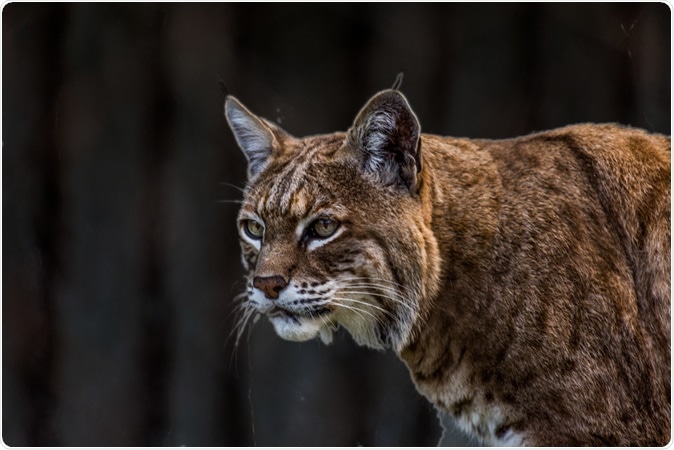Mammals have always roamed free during day light looking and foraging for food until now when they have shifted their timings to after sunset for fear of encountering humans find researchers. The study titled, “The influence of human disturbance on wildlife nocturnality” was published in the latest issue of the journal Science.

Bobcat. Image Credit: Victor Arita / Shutterstock
This study is one of the first that measures the effects of presence of humans on daily activity patterns of wildlife. The team found that presence and disturbance created by humans to the surroundings are making the mammals alter their behavioral patterns in order to escape being faced by humans.
The team of researchers documents the destruction of habitats of the mammals as well as the overexploitation that has led to reducing animal populations globally. Animals that are not harmed or exploited overtly have changed their diurnal habits out of fear of humans, the researchers note. Humans appear as large and noisy to most of these animals who perceive humans as dangerous and do their best to avoid interactions. The researchers write that as humans continue to spread out globally, there is a marked reduction in spaces that are human-free and safe for wildlife.
Kaitlyn Gaynor, lead author and doctoral student at the University of Berkeley said that after the extinction of dinosaurs humans have now become the “terrifying force on the planet” that are pushing the other mammals to venture out during the night time.
The team first noted that animals from Tanzania, Nepal and Canada including herbivores and carnivores like tigers and grizzly bears were more active at night. They came across several similar findings across scientific literature. To analyze and come to a global conclusion they conducted a meta-analysis and looked at 76 similar studies. The data obtained in these studies were from radio collars, observations and camera traps. Percentage of the animals’ activity between sunset and sunrise was analyzed and the rising percentage of nocturnal activity was analyzed alongside patterns of high or low human disturbance.
Overall the study included data from 62 species of animals and results showed that mammals were 1.36 times as nocturnal in response to human interference. The researchers noted that animals that earlier usually split their activity evenly between day and night times were now out 68 percent of the time at night with humans around. The results were consistent across species and across geographical locations. In fact 83 percent of the case studies revealed increased nocturnal behavior when humans were around. Most species studied including tapir in the rainforests, Antelope on the savanna and bobcats in the deserts had all turned nocturnal, the team found.
Human disturbance was also differentiated and their effects noted. For example humans could be hunting, or hiking or living and working in areas where animals used to live earlier. All types of human presence were seen to affect the animals making them nocturnal. The effects may be lasting despite the fact that sometimes the humans may just be passing through.
The researchers add that the future of this altered animal behavior is not well known.